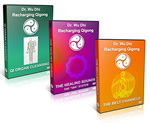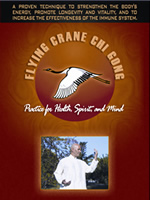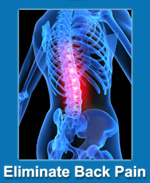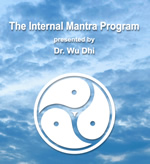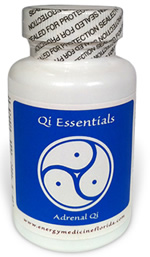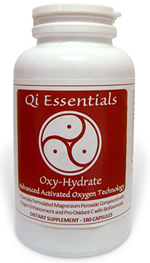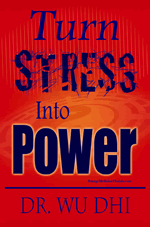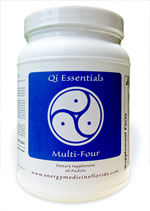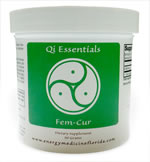The common cold has many forms in traditional
Chinese medicine. The most common forms fall under
the categories of wind cold and wind heat. As is
the nature of exterior disorders involving wind,
the pattern may change very quickly, necessitating
a change in treatment strategy over the course of
an illness. In all the forms a cold, as well as a
cough or the flu, may take, prompt treatment bring
the most effective results. The longer one waits
to treat an infectious disease, the longer it
takes to clear the pathogen.
Common Cold Caused by Wind Cold
This pattern exhibits the following symptoms:
fever, chills (these are worse than the fever),
inability to get warm, nasal or sinus congestion
with clear mucus, cough with clear mucus, stiff
neck and shoulders, occipital headache (back of
head), and a slower-than-normal pulse that is more
easily felt at the surface.
Diaphoretic (sweating) therapy is especially
helpful in this condition, since it warms the body
and pushes the pathogen out through the pores. In
the very early stages of this pattern, an
effective remedy is miso soup with the white part
of spring onion (cong bai) and fresh ginger (sheng
jiang). For more severe or advanced cases, there
is a full range of therapies, depending on the
combination of symptoms.
When the wind-cold symptoms include strong chills,
inability to sweat, wheezing, and stiff neck, the
classic and ancient remedy is Ephedra Decoction
(Ma Huang Tang). The chief herb in this formula is
Ephedra (ma huang), a powerful stimulant that
opens the bronchial passages, warms the body, and
stimulates sweating.
Cinnamon twig (gui zhi) assists the Ephedra in
warming the body and promoting a sweat, while
apricot seeds (xing ren) help relieve the
wheezing. Licorice (gan cao) acts as a harmonizing
herb, modulating the harsh nature of the Ephedra,
preventing too much sweating and toxicity. It also
has anti-inflammatory and antitussive qualities,
making it useful for sore throat and cough
symptoms.
Ephedra is never used by itself in Chinese herbal
therapy; it is always part of a formula, often
combined with licorice (as in Ephedra Decoction),
which tones down its harsh nature. Since Ephedra
can raise blood pressure, especially when used
alone or with caffeine, it should not be used by
people who have heart disease orhypertension.
For symptoms of wind cold with headache and nasal
congestion as the chief symptoms, the classic
formula isChuan Xiong Cha Tiao Wan, typically
taken with green tea (cha), which moves the action
of the formula to the head area. Green tea has
been found recently to have strong antioxidant
properties, scavenging the free radicals involved
in aging and disease.
Common Cold Caused by Wind Heat
When the pernicious influence of wind combines
with heat, the fever is worse than the chills, and
the pulse is faster than normal. The primary
symptom is a swollen and sore throat with headache
and irritability. If there is a cough, it is
usually dry or nonproductive, with occasional
expectoration of yellow mucus.
Numerous formulas treat the many variations of
this condition, but the most famous by far is Yin
Qiao San. This highly effective treatment for wind
heat symptoms, appearing in such conditions as
influenza and tonsillitis as well as the common
cold, is also available from a number of different
manufacturers as the patent formula Yin Qiao Jie
Du Pian. In addition to Yin Qiao, a number of
other effective remedies are available. For
example, Gan Mao Ling is almost always useful in
cases of wind heat. If the fever is high, Zhong
Gan Ling is preferred. If the sore throat is
especially severe, it is recommended to add Chuan
Xin Lian Antiphlogistic Tablets to the treatment.
Other Elements of Treating the Common Cold
When treating cold or flu symptoms due to wind
heat, the results are always more dramatic if the
treatment begins at the earliest possible stage of
the illness. It is important to get adequate rest,
a vacation from sources of stress, and good
nutrition in the form of soups and fresh juices.
Sweets and stimulants (such as caffeinated
beverages) cause a rapid progression in the
severity of the illness since they tend to feed
the pathogen.
The same is true for tonifying herbs such as
ginseng. People sometimes make the mistake of
taking ginseng when they feel a cold coming on
since they have heard that ginseng is good for the
immune system. Using ginseng in this case is a
serious error since ginseng will powerfully feed
the pathogen causing the illness, making the
person feel much worse. This is traditionally
known as “trapping the burglar.”
If a person suspects a burglar is in the house,
the worst step to take is to lock all the doors
and windows, for the burglar will do more damage
trying to get out. A powerful tonic herb, ginseng
acts to “lock down” the exterior of the body while
releasing energy in the interior. If a pathogen is
already inside the body, ginseng and other
stimulating tonics lock it in while simultaneously
feeding it. The proper treatment plan is to open
the pores and push out the pathogen. Herb formulas
that “release the exterior and repel wind,” such
as Yin Qiao, are used in these cases.
On the other hand, if no pathogen is in the body,
ginseng strengthens the wei qi, the body’s wall
against invaders, while it simultaneously improves
the person’s vitality and resistance to disease.
This distinction between building long-term
immunity and fighting off an acute illness is an
important contribution of traditional Chinese
medicine. While tonic herbs can be taken
long-term, it is important to discontinue their
use during a cold or flu. Then, after the pathogen
has been expelled from the body, tonic herbs can
be taken again to build up strength and vitality
over the long-term.
Using Acupuncture to Treat the Common Cold
Acupuncture and moxibustion can provide some
immediate relief from cold symptoms and help the
body expel the pathogen much faster. Needles are
typically inserted into points along the lung and
large intestine meridians, which have demonstrated
the ability to activate immune function. The most
important acupuncture point in treating the common
cold is Large Intestine 4 (“Adjoining Valleys”),
which is located in the web between the thumb and
index finger. This point is very effective for
this condition, since it suppresses pain and
relieves exterior conditions. Patients frequently
experience quick relief when the point is needled
or massaged.
Typically, one or two acupuncture treatments and a
week’s course of herbal medicine are all that are
required for colds. If the symptoms are recognized
and treated early, it is possible to fight off a
cold in a day or two with acupuncture treatment
and herbs.
The most important acupuncture point in treating
the common cold is Large Intestine 4. This point
is very effective for this condition, since it
suppresses pain and relieves exterior conditions.
I am finally starting to feel better as I get a
lot of rest a few treatments and drank a lot of
fresh juice and water.
I’ll be sending you more information on how to
stay healthy all winter and avoid winter colds.
I wish you the best in your Health, Wealth and
Happiness
Dr. Wu Dhi
PS
Don’t forget the best treatment ids to build your
immune system and avoid getting sick.
Call my office today and schedule an appointment
305-407-0120





